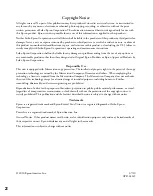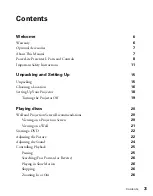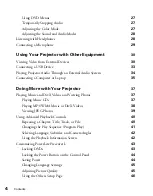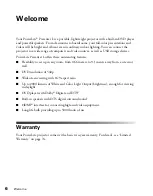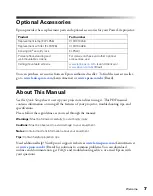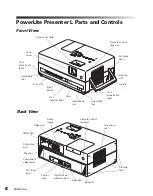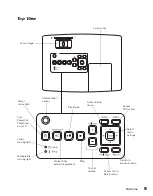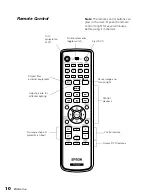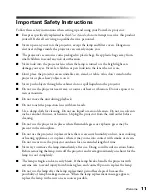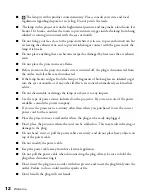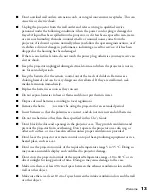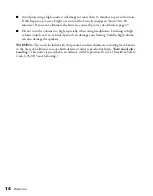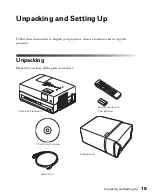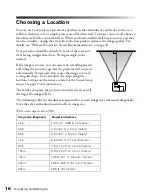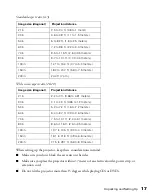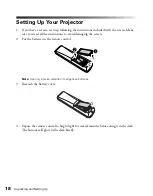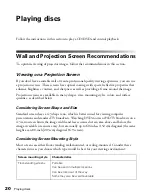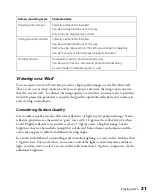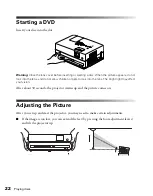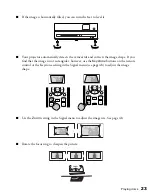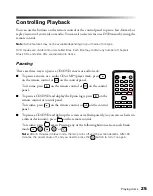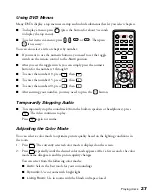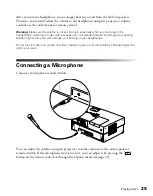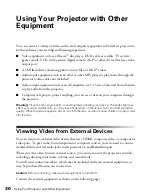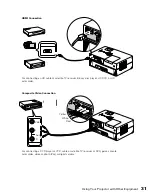
16
Unpacking and Setting Up
Choosing a Location
You can use your projector just about anywhere in the classroom or conference room, on a
tabletop, desktop, cart, or simply project on a flat white wall. To project onto a wall, choose a
flat white wall with a smooth surface. When you find a suitable wall for projection, you may
want to consider coating the area with projection paint to enhance the image quality. For
details, see “Wall and Projection Screen Recommendations” on page 20.
Your projector should be directly in front of the screen or
wall, facing straight ahead (at a 90-degree angle to the
surface).
If the image is too low, you can raise it by extending the feet
and tilting the projector up, but the projector will correct it
automatically. If necessary, this causes the image to lose its
rectangular shape. You can adjust the shape using the
keystone buttons on the remote control or the Visual Setup
menu. See page 23 for instructions.
The farther you place the projector from the screen or wall,
the larger the image will be.
The following tables list the distances required for various image sizes (measured diagonally).
Note that the zoom adjustment also affects image size.
Wide screen aspect ratio (16:9)
Image size (diagonal)
Projection distance
30 in.
2.9 to 4 ft. (0.89 to 1.2 meters)
50 in.
4.9 to 6.7 ft. (1.5 to 2 meters)
60 in.
5.9 to 8 ft. (1.8 to 2.4 meters)
70 in.
6.9 to 9.4 ft. (2.1 to 2.9 meters)
80 in.
7.9 to 10.7 ft. (2.4 to 3.3 meters)
100 in.
9.9 to 13.4 ft. (3.0 to 4.1 meters)
150 in.
14.9 to 20.1 ft. (4.5 to 6.1 meters)
200 in.
19.9 to 26.9 ft. (6.1 to 8.2 meters)
300 in.
29.9 ft. (9.1 meters)

